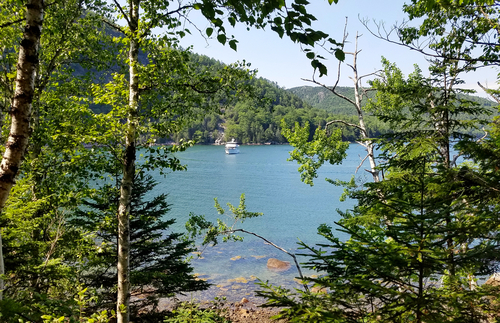
Inarts / Shutterstock
Mount Desert Island and Acadia National Park Travel Guide
Mount Desert Island is home to spectacular Acadia National Park, and for many visitors, the two places are one and the same. Yet the park’s holdings are only part of the appeal of this popular island, which is connected to the mainland by a short causeway. Besides the parklands, there are scenic harborside vill ...
Mount Desert Island is home to spectacular Acadia National Park, and for many visitors, the two places are one and the same. Yet the park’s holdings are only part of the appeal of this popular island, which is connected to the mainland by a short causeway. Besides the parklands, there are scenic harborside villages and remote backcountry roads aplenty, lovely B&Bs and fine restaurants, oversize 19th-century summer “cottages,” and the historic tourist town of Bar Harbor.
It’s not hard to understand why Acadia is one of the crown jewels of the U.S. national park system. (It draws the second-most visitors annually of any national park.)
The landscape here is a rich tapestry of rugged cliffs, pounding ocean surf, fishing and leisure boats lolling in harbors, and quiet forest paths. If you look at a map, you’ll see that the island is nearly split in two by a great tidal inlet, Somes Sound; most of the park’s land is on the eastern side of the island, though there are some vast holdings in the west, too. To help orient you, I’ve placed a color map of Mount Desert Island inside the front cover of this guidebook.
On the much-more-developed eastern side of the island, Bar Harbor is Mount Desert Island’s center of commerce and entertainment, a once-charming resort now in danger of being swallowed up by T-shirt and trinket shops. It has by far the best selection of lodging, meals, supplies, and services on the isle. (If you want to shop, fine-dine, or go out at night, you pretty much have to stay here.)
Otherwise, if quiet is what you’re seeking, consider bunking elsewhere on the island. The western side has a quieter, more settled air and teems with more wildlife than tourists; here, the villages are mostly filled with fishermen and second-homers rather than actual commerce.
The island isn’t huge—it’s only about 15 miles from the causeway to the southernmost tip at Bass Harbor Head—yet you can do an awful lot of adventuring in such a compact space and see many different kinds of towns and landscapes. The best plan is to take it slowly, exploring if possible by foot, bicycle, canoe, and/or kayak, giving yourself a week to do it. You’ll be glad you did.
A word on pronunciation: There is some debate about how to correctly pronounce the island to which we're referring. The name is of French origin; technically, it should be Mount days-airt, but nobody says it that way anymore. Most locals say “Mount Des-sert,” like what you have after dinner, which is pretty close to the French way of saying things. (Notice the accent on the last syllable.) However, plenty of tourists, transplants, and locals also say Dez-ert (like the Sahara), and that’s not wrong. After all, that’s how it’s spelled.
Acadia’s terrain, like so much of the rest of northern New England, was shaped by the cutting action of the last great glaciers moving into and then out of the region about 18,000 years ago. A mile-high ice sheet rumbled slowly over the land, scouring valleys into deep U shapes, rounding many once-jagged peaks, and depositing boulders at odd places in the landscape—including the famous 10-foot-tall Bubble Rock, which appears perched precariously on the side of South Bubble Mountain.
The Best of Mount Desert Island and Acadia National Park
Related Articles








